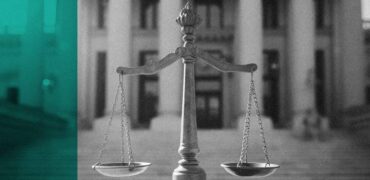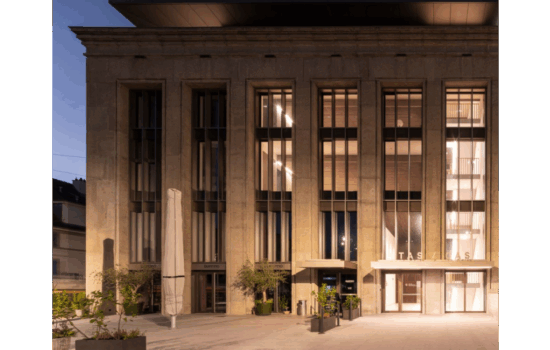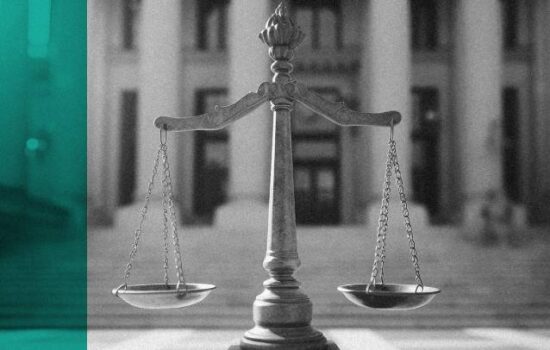In the context of the numerous road accidents and the fact that many drivers have been detected under the influence of alcohol and drugs in recent years, The Romanian Government adopted Emergency Ordinance number 84/2024, published in the Official Gazette on 29.06.2024.
In the preliminary argumentation, it is stated that the main reasons underlying this legislative approach and justifying the legislation, by means of an Emergency Ordinance, are the following: road safety; current traffic behaviour of some road users; the fact that the failure to adopt urgently the measures provided for by this emergency ordinance may lead to the harm to citizens, from the perspective of the right to life and physical integrity, as a result of traffic accidents; the evaluations carried out by the Ministry of Internal Affairs, which revealed that the upward trends in the use of various drugs and psychoactive substances among the population, mainly among young people, continue to be on the rise.
Despite the fact that this legislative approach is commendable and necessary, it comes with a number of inconsistencies and irregularities that have the potential to jeopardize the rights of innocent drivers, as we will present below.
Thus, if the driver refuses to submit to a test, with the police equipment, to determine whether or not he has consumed alcohol or psychoactive substances, his driving license is withheld until the results of the biological tests are obtained.
Until the entry into force of this Ordinance, drivers had the possibility to refuse the test, without suffering any unfavorable consequences, by requesting to have biological samples taken.
Here is the legal provision contained in the new regulation on this matter: ”(…) when the person refuses or is unable to submit to a test to determine the consumption of psychoactive substances or the concentration of alcohol in the exhaled air, the traffic police officer shall withdraw the driving license until the date of receipt of the result of the analysis of biological samples, issuing a replacement proof of it without the right to circulate”.
Therefore, these changes do not give any protection to drivers who are tested with the police’s instruments and get a positive result due to errors in the test machine and a negative result from the biological samples.
Because of this, between the time of the test and the time when the results of the biological samples come back, innocent drivers are in a thankless and unfair situation.
We consider that in this context, innocent drivers could claim material damages for the harm caused and even moral damages for the non-pecuniary rights, such as the rights to image, dignity, honor.
We understand the need to adopt rules with a preventive role and to increase road safety, but we consider it problematic that they conflict with the rights and interests of individuals who are not guilty of committing criminal offenses.
In this context, we also refer to the lack of accuracy of these means of rapid testing, which poses a serious problem in practice.
It is already well known that there is a good chance that the drug-test machines used by the police can produce false positive results, a fact also confirmed by the Higher Council of Forensic Medicine, by answering on the reasons for the negative results of the forensic toxicology system compared to the rate of positivity in police testing for acute psychoactive substance intoxication in drivers.
Thus, according to this report carried out by the Higher Council of Forensic Medicine, it was shown that in 2023, a total of 3,009 rapid tests were positive, following testing with the means in the police equipment, and after forensic analysis, it was established that only 1,898 out of the 3,009 drivers initially detected had actually consumed psychoactive substances.
We also show that these new rules are not just for car drivers, but also for drivers of electric scooters and bicycles.
Therefore, according to the new amendments, refusing to submit to alcohol or psychoactive substances tests will be punishable by a fine.
Another issue of great interest to drivers is the introduction of a number of new provisions that allow the traffic police to establish that a traffic offense has been committed, using road traffic monitoring data collected from public road administrators. In addition, the Traffic Police is given the possibility to receive video footage from other road users of aggressive driving behavior and to determine an applicable sanction on the basis of this footage.
In this regard, we reproduce the legal texts that refer to these issues, from the Government Emergency Ordinance no. 84/2024. According to art. 32 of this normative act:
”The Romanian Police has the right to process, under the conditions of this emergency ordinance, road traffic monitoring data collected by the administrators of public roads of county and local interest with the help of technical means installed on the roads they administer.
(2) The Romanian Police shall receive from the administrators of public roads of county and local interest, automatically, through secure communication systems, reports and traffic monitoring data related to them concerning the possible:
a) violation of traffic rules on public roads;
b) the presence on the road of vehicles subject to confiscation, wanted by law, or which may be used as evidence in legal proceedings.
(3) Possible violations of traffic rules on public roads concern:
(a) the maximum permissible speed limit for the category of vehicle on a particular section of road;
b) the prohibition or restriction of driving a vehicle in a lane of the direction of travel;
(c) the meaning of the red traffic light;
(d) a railroad crossing
e) prohibition of aggressive behavior when driving vehicles on public roads;
(f) overtaking columns of vehicles stopped at a red traffic light or at level crossings with the railroad”.
Another controversial provision introduced by the Government Emergency Ordinance is the following: ”The traffic police officer may establish the contravention of aggressive behavior while driving a vehicle on public roads, thus (…) and on the occasion of verifying the report made by a road user who has perceived directly and by chance that the driver of a vehicle has performed, on the public road, any of the maneuvers referred to in 54 paragraph (1) of Emergency Ordinance 195/2002 and has captured these aggressive maneuvers in an audio-video or video recording, as appropriate”.
The aggressive behavior referred to in the incriminating text, reproduced above, is as follows:
– moving successively from one traffic lane to another or from one lane to another, alternately from left to right, in order to overtake a succession of vehicles moving in the same direction;
– turning the vehicle using the service brake;
– starting the vehicle from a standstill by excessive idling of the driving wheels;
– driving the vehicle at a very close distance to another vehicle, in front of or behind another vehicle, or to the side, or suddenly reducing the speed of the vehicle without good reason, thereby intimidating the driver;
– the repeated use of acoustic and/or light signals in such a way as to compel the driver of the vehicle in front of him unjustifiably to clear the lane;
– driving a moped or motorcycle with only one of its wheels in contact with the roadway;
– reversing with the vehicle in order to intimidate other road users behind;
– intentionally causing the vehicle to skid in a controlled manner with a view to turning or turning the vehicle;
– intentionally driving a vehicle by repeatedly accelerating the engine in such a way as to cause discomfort to persons in the area of the public highway”.
In view of these new legal provisions, state bodies are authorized to issue a statement of offense in the absence of the offender and without the need for confirmation of the facts by a witness.
In this context, we can’t help but wonder what could happen if there is some kind of traffic conflict between two drivers and if these videos sent to the police could be an act of revenge.
Moreover, in the age of technology, we believe that there is a possibility that edited footage may end up in the possession of the police. The ability to edit a video at this point in time could raise serious problems, in that it could lead to the emergence of video recordings that are not related to reality or that misrepresent facts. Thus, we believe that the police bodies have the task of carefully selecting the footage they will receive, drawing clear boundaries, which will be quite difficult in practice. The new amendments also do not come with specific rules to help put these provisions into practice.
In our opinion, the introduction of these rules may lead to abuses on the part of state representatives and to the sanctioning of persons without clear evidence of the commission of the act and without a relevant analysis of the circumstances of the commission of the act.
Therefore, we consider that these new legal provisions are in conflict with the legal text of art. 16 paragraph (1) of OG 2/2001, according to which: ”The report of the offense will necessarily include: (…) a description of the offense, indicating the date, time and place where it was committed, as well as the circumstances that can be used to assess the seriousness of the offense and to evaluate the possible damage caused (…)”.
We believe that it is very difficult for a report, issued following a video received from another road user, to comply with all the rigors required by law in order to be considered valid.
Thus, there is an inherent risk that the footage used by the police does not contain essential and decisive elements. It seems rather difficult to imagine that by visualizing a video, made by another traffic participant, it will be possible to make a complete description of the act and a presentation of all the circumstances in which it was committed, in order to assess the seriousness of the act, the reasons for committing the offense, the degree of danger created for the social value protected by the legal norm, etc., in order to be able to choose a fair and just punishment, in relation to all these aspects.
At the same time, the legislation on misdemeanors talks about the principle of proportionality, i.e. the application of a punishment that reflects the seriousness of the offense committed. Thus, it is difficult to take this principle into account if the penalty is established on the basis of video footage.
In this regard, we reproduce the legal rule found in Article 21 paragraph (3) of Ordinance 2/2021, according to which: ”The sanction shall be applied within the limits set by the normative act and shall be proportionate to the degree of social danger of the offense committed, taking into account the circumstances in which the offense was committed, the manner and means of its commission, the purpose pursued, the result produced, as well as the personal circumstances of the offender and other data recorded in the minutes”.
This article was prepared, for the Blog of Costaș, Negru & Asociații, by Ms. Oana Alexandra Budi (Arad Bar Association).
Costaș, Negru & Asociații is a civil law firm with offices in Cluj-Napoca, Bucharest and Arad, which provides assistance, legal representation and consultancy in several areas of practice through a team of 20 lawyers and consultants. Details of the legal services and the composition of the team can be found on the website https://www.costas-negru.ro. All rights for the materials published on the company’s website and through social networks belong to Costaș, Negru & Asociații, their reproduction being allowed only for information purposes and with the correct and complete citation of the source.













